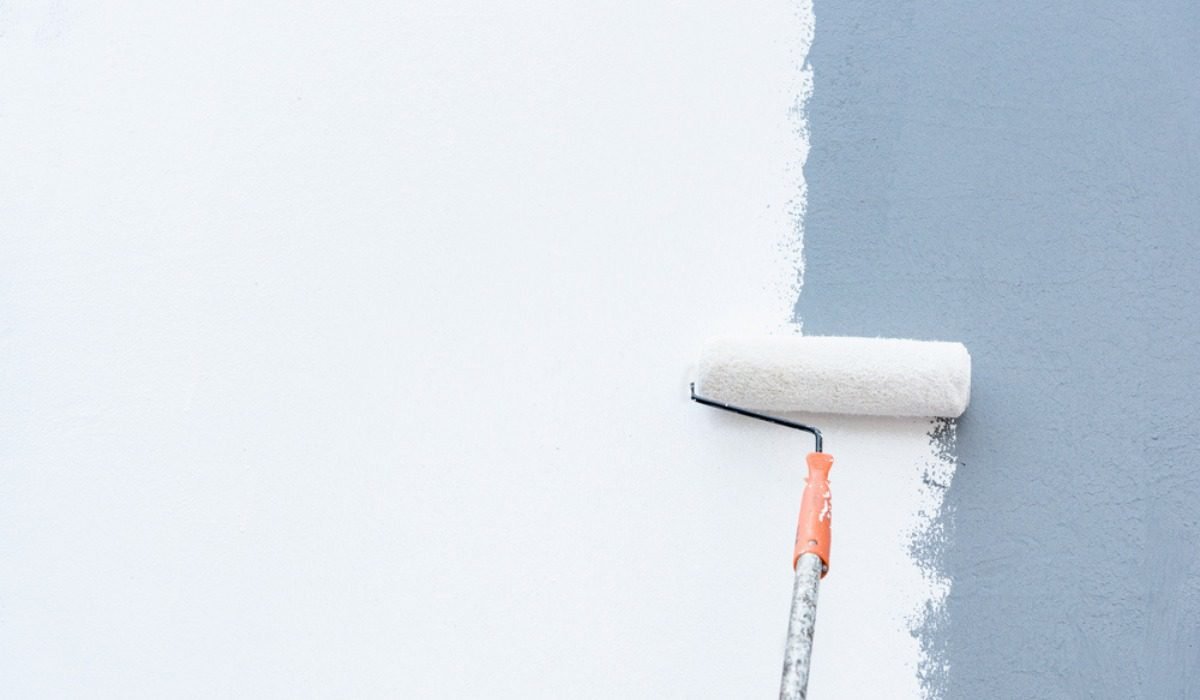White paint is a timeless classic in the world of interior design, offering a fresh, clean and versatile canvas for any space. However, choosing the right shade of white can be a daunting task, as not all whites are created equal. With undertones ranging from cool to warm and finishes varying from matte to high-gloss, selecting the perfect white paint for your interior walls requires careful consideration. In this article, we’ll explore the art of complimenting undertones with white paint, the different types of white paint finishes, how to determine which white is best suited for your interior walls and essential maintenance tips. We’ll also delve into the advantages and disadvantages of using white paint, ensuring you make an informed decision for your 2024 interior painting projects.
Complementing undertones with white paint
White paint is often perceived as neutral, but in reality, it can have distinct undertones that can either complement or clash with your existing decor and lighting. Understanding these undertones is crucial in creating a cohesive and harmonious interior space.
Cool undertones
Whites with cool undertones, such as blues or greys, tend to create a crisp and airy atmosphere. These shades are ideal for rooms with natural light and can complement cooler colour schemes.
Warm undertones
Whites with warm undertones, like yellows or reds, add a cosy and inviting feel to a space. They pair well with warm wood tones and earthy colour palettes.
Neutral undertones
Pure, neutral whites without any discernible undertones can provide a clean slate for bolder accent colours or serve as a backdrop for minimalist decor.
Paint finishers to consider on white paint
When selecting a white paint for your interior walls, the finish you choose can significantly impact the overall look and feel of the space. Here are some common white paint finishes to consider:
Flat/matte
This non-reflective finish is ideal for low-traffic areas and can help conceal imperfections on walls. However, it can be more challenging to clean and may not be suitable for high-moisture areas.
Eggshell
With a slightly higher sheen than matte, eggshell finishes are easy to clean and provide a soft, velvety appearance. They are commonly chosen for both living rooms and bedrooms.
Satin
Satin finishes offer a subtle sheen and a smooth, durable surface, making them well-suited for high-traffic areas like hallways and kids’ rooms.
Semi-gloss
This versatile finish is highly durable and moisture-resistant, ideal for bathrooms, kitchens and trim work.
High-gloss
For a sleek, reflective look, high-gloss white paint can create a modern and sophisticated aesthetic. However, it may highlight imperfections on walls.
Factors to be considered
Room size and natural light
Larger rooms with ample natural light can handle cooler, brighter whites, while smaller or dimly lit spaces may benefit from warmer, cosier whites.
Existing decor and furnishings
Evaluate the undertones of your current decor and furnishings to ensure the white paint you choose complements and enhances the overall colour scheme.
Personal preferences
Ultimately, the choice of white paint should align with your style and the desired ambiance you wish to create in each room.
Tips for maintenance
While white walls can create a fresh and inviting atmosphere, they also require regular maintenance to keep them looking their best. Here are some tips for maintaining your white interior walls:
Clean regularly
Use a mild detergent and a soft cloth or sponge to gently wipe away dirt and smudges. Avoid harsh chemicals or abrasive cleaning products that can dull or damage the paint.
Touch up
Over time, high-traffic areas may show signs of wear and tear. Keep a small can of the same white paint on hand for touch-ups and spot repairs.
Proper lighting
Adequate lighting is essential for showcasing the true colour and undertone of your white walls. Consider adding strategically placed lamps or adjusting window treatments to maximise natural light.
Protect from moisture
In areas with high humidity, such as bathrooms or kitchens, use a semi-gloss or high-gloss finish to ensure your white walls are moisture-resistant and easy to clean.
See also: Things to keep in mind while painting walls white
Advantages
Creates a bright and airy atmosphere
White walls reflect light, making rooms feel more open, spacious and inviting.
Versatile and timeless
White is a classic choice that can adapt to various design styles and seamlessly transition between trends.
Highlights architectural details
White walls allow intricate mouldings, trim and other architectural features to take centre stage.
Serves as a blank canvas
White walls provide a neutral backdrop for showcasing bold artwork, colourful furnishings and personal decor.
Disadvantages
Shows imperfections
White walls can easily reveal minor flaws, such as dents, scuffs, or uneven textures, requiring regular maintenance and touch-ups.
Requires frequent repainting
High-traffic areas or rooms with direct sunlight may need more frequent repainting to maintain a fresh, consistent look.
Can appear cold or sterile
Depending on the undertone and lighting, some whites may create a clinical or overly stark atmosphere if not balanced with warm accents.
Limited colour depth
While versatile, white walls may lack the depth and visual interest provided by bolder or accent wall colours.
Selecting the best white paint for your interior walls in 2024 requires careful consideration of undertones, finishes, room characteristics and personal preferences. By understanding how to complement undertones, choosing the appropriate finish and implementing proper maintenance techniques, you can create a fresh, inviting and timeless interior space. While white paint offers numerous advantages, it’s essential to weigh the potential disadvantages and strike the right balance between crisp and cosy. With the right white paint, your interior walls will serve as a beautiful canvas for showcasing your unique style and creating a harmonious and welcoming living environment.
FAQs
While white paint can make a space appear brighter and more open, it can also create a sense of closeness if not balanced properly. To avoid making a room feel smaller, consider using a cooler, brighter white and incorporating mirrors, light-coloured furnishings and ample lighting to enhance the sense of spaciousness.
When selecting a white paint for trim and mouldings, it's generally recommended to use a higher-sheen finish, such as semi-gloss or high-gloss, for a crisp and clean look. Additionally, consider using a slightly different shade of white than your wall colour to create subtle depth and definition.
Yes, you can create visual interest by mixing different shades of white paint on your interior walls. For example, you could use a cooler white on the main walls and a warmer white on an accent wall or for trim work. Just be sure to consider the undertones and how they interact with your existing decor and lighting.
Proper surface preparation is crucial for achieving a smooth and long-lasting white paint finish. Start by cleaning the walls thoroughly, repairing any cracks or holes and applying a high-quality primer. For new drywall or surfaces with significant colour changes, use a specialised primer designed for optimal adhesion and coverage.
The frequency of repainting white interior walls will depend on several factors, such as the quality of the paint, the amount of wear and tear and the level of exposure to direct sunlight. As a general guideline, consider repainting every 3-5 years to maintain a fresh and consistent look, or sooner if you notice significant fading, scuffs, or imperfections.
Yes, most paint brands offer white paint bases that can be tinted to create custom shades of white. This allows you to achieve the perfect undertone or adjust the depth of the white to suit your desired look. When having white paint tinted, be sure to communicate clearly with the paint professionals about the specific undertone (cool, warm, or neutral) you prefer. They can then add the appropriate tinting colourants to the white base to achieve your desired shade.
It's essential to test white paint samples in the actual room where you plan to paint before making a final decision. Different lighting conditions, existing furnishings and room orientation can all impact how a particular white paint appears. Here are some tips for testing white paint samples effectively: a. Purchase sample pots or paint chips from your chosen brand and apply the whites directly onto your walls, covering a large enough area to get an accurate representation. b. Observe the painted samples at different times of the day and under various lighting conditions (natural light, artificial light, etc.) to see how the undertones shift. c. Live with the samples for a few days, allowing you to experience how the whites interact with your space over time. d. Compare the samples side by side with your existing decor, furniture and flooring to ensure a harmonious colour scheme. e. Consider painting larger sample areas (e.g., a full wall) for a better perspective, especially in smaller rooms or spaces with limited natural light. By taking the time to test white paint samples properly, you can avoid costly mistakes and ensure that the final white you choose creates the desired ambiance and complements your interior design elements. Can white paint make a room feel smaller?
How do I choose the right white paint for my trim and mouldings?
Can I mix different shades of white paint on my interior walls?
How do I properly prepare my walls for white paint?
How often should I repaint my white interior walls?
Can white paint be tinted to create different shades?
How do I test white paint samples before committing to a colour?
| Got any questions or point of view on our article? We would love to hear from you. Write to our Editor-in-Chief Jhumur Ghosh at [email protected] |

Upasana Mandhata, currently in her final year of Law, is pursuing a BA LLB Degree at VIT University Chennai. Her interest in content creation dates back to her school and college years when she discovered a writing passion. Drawing from personal experiences, her writing style has been shaped by her journey and encounters. She enjoys experimenting with new recipes, painting, or swimming while clocking out of work time.











